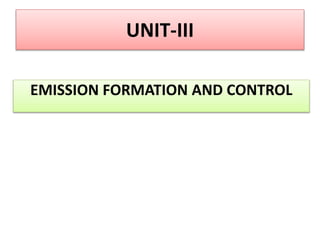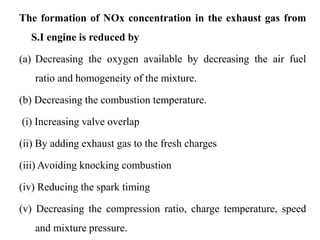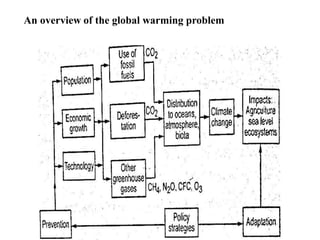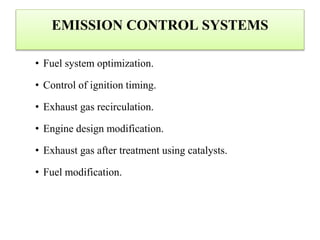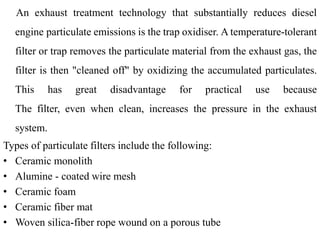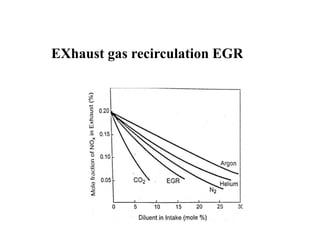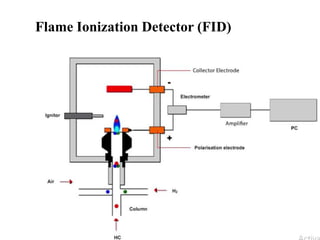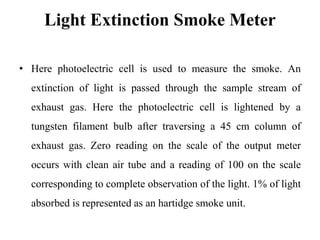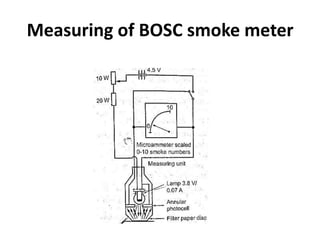The document discusses emission formation and control. It describes the mechanisms of formation of NOx, HC, CO, and particulate emissions from engines. Methods of controlling emissions discussed include three-way catalytic converters, particulate traps, and EGR. Measurement equipment for emissions include chemiluminescence detectors for NOx and FID for HC. Smoke and particulate are measured using light extinction and filtering methods. International and national emission standards like Euro norms and Bharat Stage norms in India are also overviewed.
